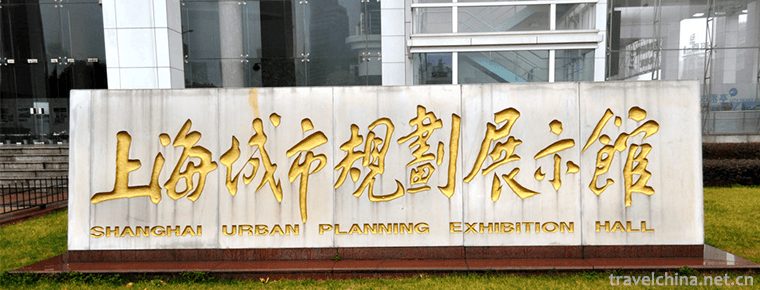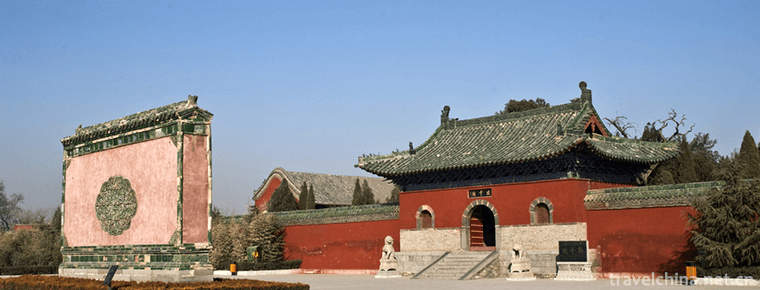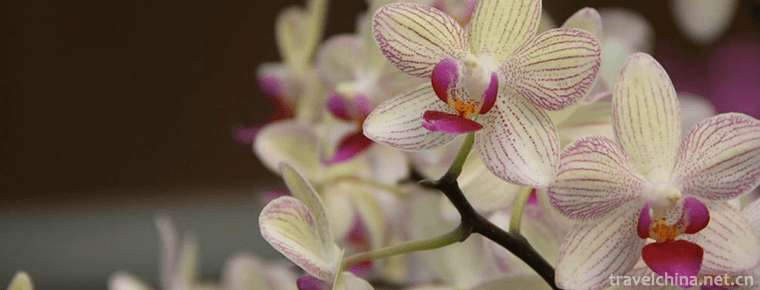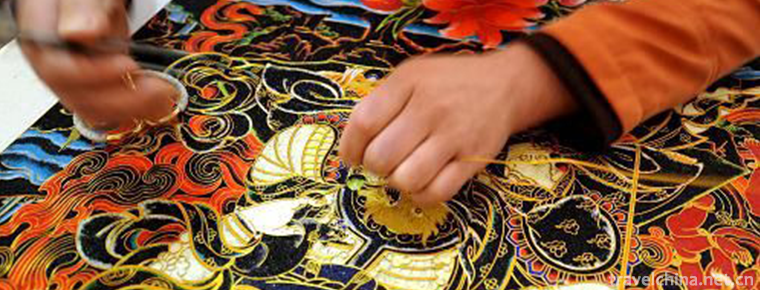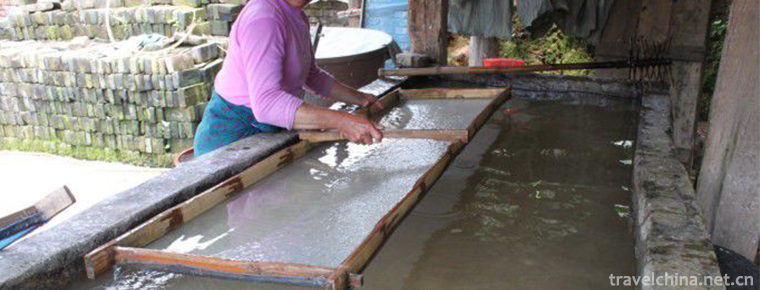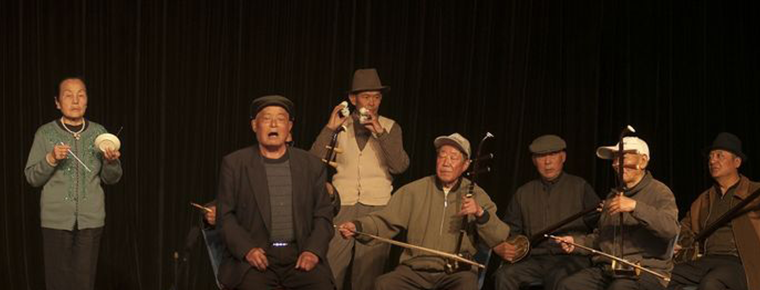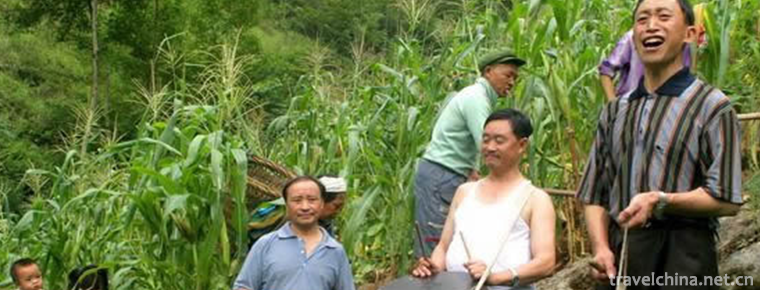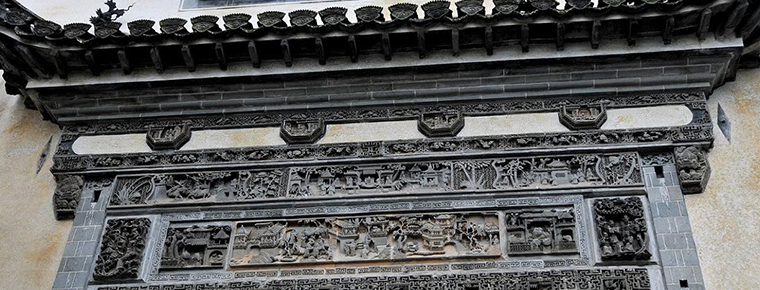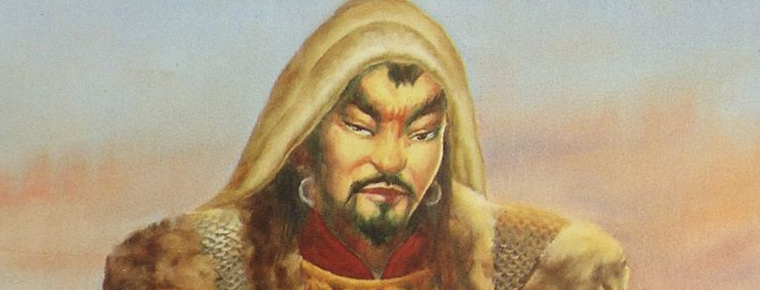Qiyang Opera
Qiyang Opera
Qi Opera is one of the traditional local dramas in Hunan Province. It is also called Qiyang Band, Qiyang Opera in the early years of the Republic of China, and Qiyang Qidong Opera in the folk. Qi Opera was named for its formation in Qiyang. The late Qing Dynasty, also known as "Chunan Opera", was called Qi Opera after the founding of New China. The embarrassment Qi Opera faces is a common phenomenon.
Qi Opera is widely distributed in Hunan Province. In addition to Hengyang, Lingling, Huaihua, Shaoyang, Chenzhou and other areas, there are many Qi Opera troupes performing in other provinces. At one time, Qiyang disciples were all over the world.
As of 2015, there are 19 kinds of local operas in Hunan Province, but there are no professional performing groups in many kinds of operas. Most of them only have one performing group, forming a real phenomenon of "the first group in the world", such as Kun Opera, Baling Opera, Jinghe Opera, Shaoyang Huagu Opera, Lingling Huagu Opera, Miao Opera, etc. There are also some major and minor types of local drama, and professional performing groups are decreasing.
In 2008, Qi Opera was selected as the second batch of national intangible cultural heritage list.
Historical Origin
Qi Opera originated from Yiyang Opera. It was formed after it was introduced into Qiyang in the early Ming Dynasty and merged with local art. It evolved over a long period of time. It is said that during the Yongle Period of Ming Dynasty (1403-1424), Yiyang Opera spread to Qiyang along with the immigrants from Jiangxi, and gradually became localized. During the Chenghua Period of Ming Dynasty (about 1465-1487 A.D.), Yiyang Opera combined with local rich folk arts and gradually became localized to form Gaoqiang Opera. During the Wanli Period of Ming Dynasty, Kunshan Opera became popular throughout the country, and then Qiyang Opera absorbed. After Emperor Kangxi of Qing Dynasty, Qi Opera merged Hui tune, Han tune and Qin tune to form ballistic tune (North-South Road). With the increase of vocal cavity, Qi Opera repertoire and performing arts are becoming more and more abundant, and gradually developed into a multi-tone opera based on ballistic cavity. During the reign of Kangxi and Qianlong in the Qing Dynasty, the society was peaceful, the economy was prosperous, the people lived and worked in peace and contentment, the official choices of gimmicks and solicitation songs, and the folk performance of rewarding gods became the social fashion for a while. At the end of Qing Dynasty, Qiyang Opera was called "Chunan Opera" in Jiangxi and Fujian. During the period of the Republic of China, Qiyang Opera was called "Qiyang Opera", which was named for its occurrence and development in the Qiyang area. After the founding of New China, it was named Qi Opera. It has three kinds of tunes: Gao, Kun and Tan. It can be divided into Yonghe and Baohe. Its artistic characteristics are high, rough and full of wild atmosphere. But the stage language, unified use of standardized Qiyang Mandarin.
The earliest play of Yiyang Opera is Mulian Zhuan, which is known as the ancestor of Qi Opera. In the late Ming Dynasty, Qi Opera has become a popular drama in Hunan. According to the records of Qiyang County Records of Art and Literature compiled by Tongzhi for nine years in the Qing Dynasty, there were more sound system of theatrical troupe activities in Qiyang at the end of the Ming Dynasty.
Gaoqiang is the earliest voice of Qiju Opera. In the late Kangxi period of the Qing Dynasty, Qiju Opera gradually formed ballistic cavity (North-South Road) after integrating Hui tune, Han tune and Xihuang tune. In the process of development, the South Road is influenced by the exchange of Yihuang Opera. With the change of its popularity, repertoire and performing arts, Qi Opera has become increasingly rich in vocal forms.
During the Kangxi and Qianlong periods of the Qing Dynasty, Qiju Opera Society spread and developed widely in Guangxi, Guangdong, Jiangxi and Fujian provinces. The famous Qi Opera Class Society had auspicious classes and senior four classes during the Qing and Jiaqing years. Since Xianfeng and Tongzhi (1851-1874), Qi Opera has developed in an all-round way, and many new drama clubs, plays and famous artists have emerged.
At that time, there were three classes: subject class, secondary class and Jianghu class. First, subject class. Generally speaking, artists have only completed their teacher's training for three years, during which their activities are in their classes. The early scientific classes took part in activities in Baishui, Lingling, Guitsui and Qiyang. Secondary class. Generally, after an apprentice leaves the school, he has to help his teacher for another three years. During this period, the apprentices still learn opera while singing, and have the income of microwave. This period is called "middle class". 3. Jianghu class. The earliest Jianghu class was Laochun Flower Class, which performed in Wugang area during the reign of Kangxi. During the reign of Qianlong, there were such famous classes as Qingfang Class, Ruihua Class and Xinxitang Class, such as Rongqing Class, Lao Yonghe Class and so on. Four Classes, Rongqing Class, Lao Yonghe Class and Tianxianyuan in the late Qing Dynasty were collectively called "Four Classes of Famous People".
Qi Opera originated in Qiyang, but in the hundreds of years of circulation, Qi Opera spread throughout half of China. During the reign of Kangxi and Qianlong in the Qing Dynasty, Qi Opera not only flourished in the province, but also spread to neighboring regions and provinces, covering Guangxi, Guangdong, Jiangxi, Fujian, Yunnan and Guizhou provinces, reaching its peak.
In the mid-Ming Dynasty, Mulian Opera of Yiyang Opera in Jiangxi was introduced into Qiyang, which was combined with Qiyang local language, music, sacrifice, customs and folk customs, and gradually evolved into Qiyang Opera Gaoqiang. Later, Kun and ballistic chambers were introduced one after another and became the three loud chambers of Qi Opera.
During the Jiajing period of the Ming Dynasty, Qi Opera began to take shape. Since then, it has gradually spread to southern Hunan, western Hunan, central Hunan, northern Guangdong, southern Jiangxi, western Fujian, Guangxi and Eastern Guizhou, known as "Qiyang disciples all over the world". In the long-term spread process, the differences in repertoire, singing, facial makeup, costume, work and performance style resulted in the formation of two major schools: the Yonghe School in southern Hunan with Qiyang County and Yongzhou City as the center, and the Baohe School in central Hunan and Western Hunan with Shaoyang City as the center. It is widely used in Qiyang, Hengyang, Shaoyang, Lingling, Chenzhou, Huaihua and other areas of Hunan Province, as well as in the whole prefecture, Guilin, Pingle, Liuzhou and southern Jiangxi, northern Guangdong and Western Fujian of Guangxi Zhuang Autonomous Region.
After Emperor Kangxi of Qing Dynasty, Qi Opera merged Hui tune, Han tune and Qin tune to form ballistic cavity. With the continuous integration and absorption, Qi Opera's voice, repertoire and performing arts are increasingly rich, and gradually developed into a multi-tone local drama in Hunan Province.
During the Tongzhi period of the Qing Dynasty, Zuo Zongtang led the army to fight. He once accompanied the army with the Qiyang team and led Qi Opera to Xinjiang. There is a saying among the people that "Qiyang's children are everywhere in the world", and Qi Opera is flourishing for a time. Guo Moruo once said after seeing the performance of Qi Opera: "Qi Opera is the second best drama in the country".
inherit
In the field of Qi Opera, the artists said that they went to the south of Jiangxi three times. The first batch was in the Qianlong period; the second batch was in the late Tongzhi period; and the third batch was in the late Qing Dynasty and the early Republic of China. During the period of Emperor Daoguang, the new Fuxiang Ban led by artist Long Mingxin was well-known in Ninghua, Jiangxi Province. During the period of the Republic of China, the first female Keban Lihua Ban of Qi Opera was founded in Hongqiao, Qiyang, in 1933.
After the founding of New China, theatre troupes flourished. In 1956, there were 29 Qi Opera societies in Hunan Province, involving 1972 people. Since 1958, he has continuously created modern dramas, such as Food Delivery and General Singapore. In 1960, the Hunan Qi Opera Art Troupe reported the performance of Naoyan Mansion, and in the same year, the construction of the Hunan Qi Opera House began. In 1963, Qi Opera Department was established in Provincial Opera College and began to recruit professional students. Ten years of turmoil have devastated Qi Opera art. Since 1978, Qi Opera art has gradually recovered. At the end of 1980, Hunan Provincial Cultural Bureau organized Qi Opera teaching and performance throughout the province, organized and selected 24 excellent drama catalogues, and consequently retained a large number of excellent drama performance art materials for Qi Opera, and made great efforts for the preservation and development of Qi Opera.
Years are long and prosperous
Qi Opera, also known as Qiyang Opera, Chunan Opera and Han Opera, is named for its origin in Qiyang more than 500 years ago. It is widely popular in Qiyang, Hengyang, Shaoyang, Lingling, Chenzhou, Huaihua and other areas of Hunan Province, as well as in the whole prefecture, Guilin, Pingle, Liuzhou, southern Jiangxi, northern Guangdong and Western Fujian of Guangxi Zhuang Autonomous Region. It is the most far-reaching and radiating of the eight ancient dramas in Hunan Province. Broadest and oldest drama.
Qi Opera is rich in music, with more than 940 traditional operas and 1079 music cards. Qiju opera has three kinds of arias: Gaoqiang, Tanqiang and Kunqiang. The Arias are high and exciting. The accompaniment instruments are mainly Qihu, Yueqin, Sanxian, Banhu (Guaqin) and flute. There are 92 kinds of Qi opera facial makeup, generally only red, black, white tricolor, more attention to eye, nose, mouth delineation, strong lines. The existing business in Qi Opera can be divided into seven lines: Sheng, Xiaosheng, Huafa, Ugly, Zhengdan, Xiaodan and Lao Dan. Qi Opera is characterized by its rough and simple performance, unique skills, and its performing art tends to develop from life to dance. At the same time, it combines folk martial arts such as boxing and sword dancing, with beautiful movements and local characteristics.
However, Mei Lanfang once lamented that "Qiyang disciples are all over the world" and Guo Moruo called it "the second best opera in the country", but few people know it now.
With the change of the times and the change of people's emotional expression, Qi Opera, like other Chinese dramas, gradually fades out of the lives of the masses, especially urban residents.
At present, Qi Opera is on the decline, the loss of traditional plays is serious, and the creation of new plays is difficult. There are nearly 200 lost tunes in the past. Qi opera writers, composers, directors, actors and other personnel are seriously lacking, coupled with the old artists have left one after another, traditional art can not be inherited, Gaoqiang and Kunqiang operas have also been lost, many of the stunts are no longer able to perform. According to the survey, most of the existing Qi Opera performing groups in Hunan have survived, and only two or three can perform normally.
Building Qi Opera Dream Together
It is the Qi Opera Dream of the Huxiang people to make Qi Opera with a long history of 500 years reappear its brilliance.
In recent years, Qiyang County Party Committee and county government have done a lot of work to rescue, inherit and develop Qiju Opera, a national intangible cultural heritage. Qiju Opera Development Fund has been set up, the county financial allocation has increased substantially, and Qiju Opera talent training project has been launched. In addition, domestic and foreign drama art experts, scholars and creators have been actively organized to summarize Qiju Opera, and 32,000 words have been published. Chinese Qi Opera and nearly 250,000 words of Qi Opera Research Collection. The government has also strengthened the construction of theatres and troupes to provide venues for performances.
In order to adapt to the tastes of the vast rural masses, Qi Opera mainly promotes small stage, small team and small folding opera. It delivers more than 200 operas to the countryside every year, which not only enriches the basic cultural life, but also realizes the economic benefits of the troupe. At the same time, the integration of resources has also brought Qi Opera back to the city stage.
With the vigorous promotion of the government, Qiju Opera was designated as the second batch of national intangible cultural heritage by the State Council in 2008. This undoubtedly promotes the recovery of Qi Opera to a certain extent, but how to make Qi Opera glow with new vitality still has a long way to go.
No matter what kind of drama, the people will like it in the end to have vitality. The key to the development of Qi Opera is to change some old concepts and adapt to the aesthetic and values of modern audiences.
In the form of performance, we should boldly incorporate modern elements: firstly, on the premise of maintaining the unique style of Qi Opera, we should inject new era contents into traditional opera, new historical drama and modern opera; secondly, we should reform the voice of actors. Except Xiaodan and Zhengdan adopt the combination of true and false voices, all other actors perform modern operas using the original voice, while Qi Opera traditional opera, singing aspect. The third is to integrate modern elements into music design and accompaniment form, and strive to carry out new aesthetic exploration of Qi Opera art.
In the cultural inheritance, we should strive to preserve the inheritance of Qi Opera. On the one hand, the education system should popularize the knowledge of Qi Opera to teenagers; on the other hand, it should form a long-term mechanism for the training of professional talents to encourage young actors to join the cause of Qi Opera.
In terms of policy support, we should strengthen publicity and expand the market. Relevant departments should continue to support theatre production studios, provide new scripts and produce new plays for the troupe. They should not only preserve the original flavor of Qi Opera, but also have the atmosphere of a new era. On the other hand, the troupe itself should also be linked with enterprises and other departments, implement the "marriage" between enterprises, activate the performance market, and make Qi Opera popular through the shooting and screening of Qi Opera films.
Local characteristics should not be lost
Everywhere in Sichuan, we can see the cultural and creative products made of Sichuan Opera Facebook. The cultural imagery emphasized all the time has played a great role in promoting local culture.
We can refer to the practices of Sichuan and other places to develop Qiju Opera as a tourist resource. Emperor Shun's great love of diligent government, loving the people, abdication and virtuous people, the steadfastness of Emperor E and Nvying's life and death, and the exotic prose, exotic characters and exotic stones of "Three Great Cliffs"... Combining the propaganda and performance of Qi Opera with these humanistic landscapes will surely achieve twice the result with half the effort.
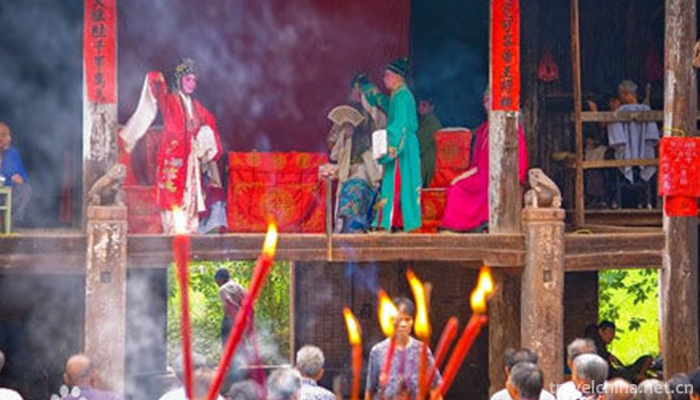
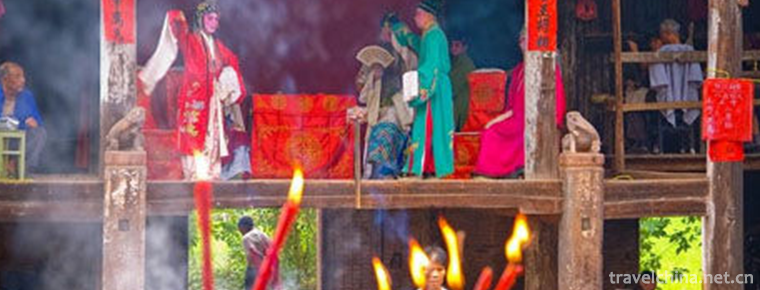
Qiyang Opera
-
Shanghai Urban Planning Exhibition Hall
The Shanghai Urban Planning Exhibition Hall was completed in early 2000 and opened to the public on February 25, 2000. As an important window for Shanghai's external publicity, Shanghai
Views: 148 Time 2018-12-19 -
Bigan Temple
Bigan Temple, located in Weihui, Henan Province, is one of the most important temple-tomb complex. It is the first temple in China with tomb-worshippers, known as "the first temple in the world&a
Views: 203 Time 2019-01-02 -
Yanling National Flower and Tree Expo Park
Yanling National Flower and Tree Expo Park (Yanling Flower and Tree Expo Park) is located in the eastern part of Xuchang City, Henan Province.
Views: 130 Time 2019-02-28 -
Weaving Techniques of Tibetan Bangdan and Kapa
The woolen apron commonly used by Tibetan people is called "Bangdian" in Tibetan, which has the functions of decoration and cold resistance. Jiedexiu Town, Gongga County, Shannan District, T
Views: 177 Time 2019-04-05 -
Manufacturing Techniques of Tussah Paper
The manufacturing history of tussah paper is as long as that of linen paper. The raw material for making the paper is the phloem fibers of the tree. The bark of the tree contains wood phloem fibers wh
Views: 196 Time 2019-04-18 -
Five Palace Tunes in Haizhou
Haizhou Five Palace Tunes is a traditional folk music with a long history. It is an important link of Ming and Qing folk songs in Jiangsu Province. It is a precious relic of ancient "Zhugong Tune
Views: 124 Time 2019-05-02 -
Grass grass drums and drums
Grass gongs and drums, also known as grass chants, are commonly known as "hilarious songs". It is a unique form of folk song art. It is a kind of Tujia folk song that the
Views: 146 Time 2019-05-02 -
Huizhou three carving
The three carvings in Huizhou are a kind of local traditional carving art. They refer to three kinds of local traditional carving crafts, i.e. wood carving, stone carving and brick carving,
Views: 158 Time 2019-05-04 -
Jangar
Jianger Jianger, the local traditional folk literature of Xinjiang Uygur Autonomous Region, is one of the national intangible cultural heritage.
Views: 141 Time 2019-05-05 -
Jinhua Alsophila Nature Reserve
Jinhua Alsophila spinulosa nature reserve is a provincial nature reserve approved by Sichuan Provincial People's Government in 1987. In sifangjinggou, Jinhua Township, 48 kilometers southwest of Rongxian City
Views: 170 Time 2020-10-15 -
Mineral resources in Suining
The mineral resources with more reserves in Suining City mainly include oil, natural gas, well salt, placer gold, limestone, etc., especially natural gas and brine resources. Suining has developed and utilized 7 kinds of mineral resources, including shale mine
Views: 218 Time 2020-12-16 -
Nanchong social security
In 2019, there were 145900 urban "minimum living allowance" workers in Nanchong, 17500 less than that in 2018; 562400 rural "subsistence allowances", an increase of 20900 over 2018; and the per capita subsidies for urban and rural minimum living allowances
Views: 369 Time 2020-12-17
